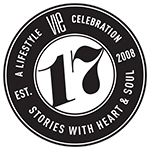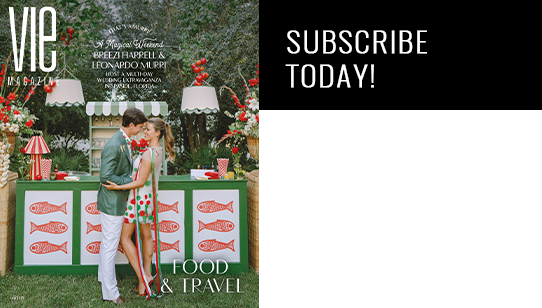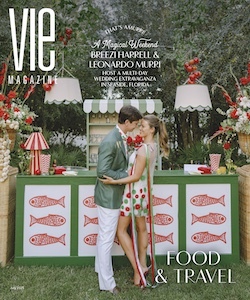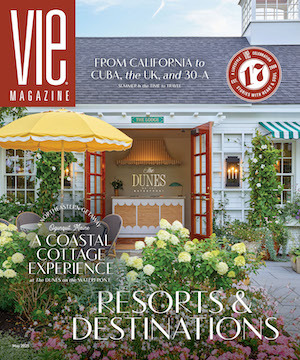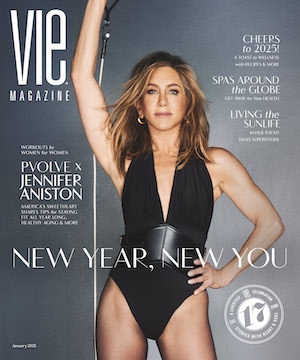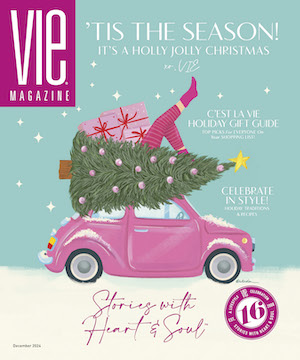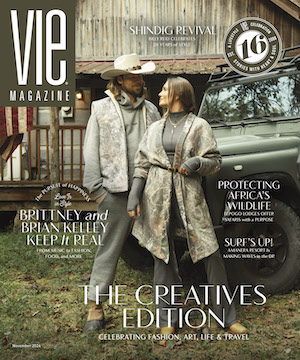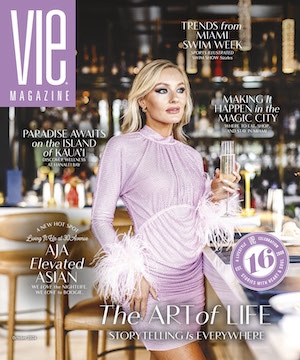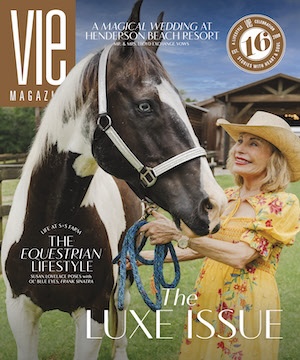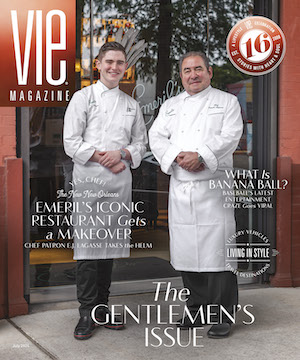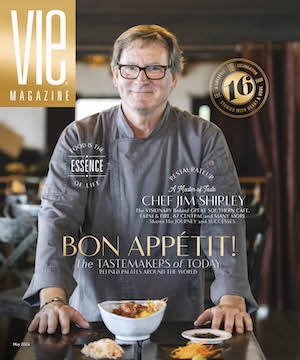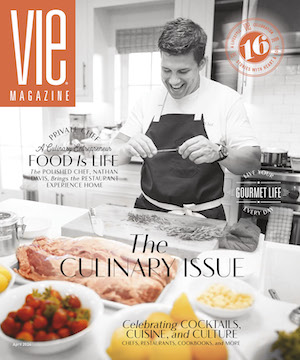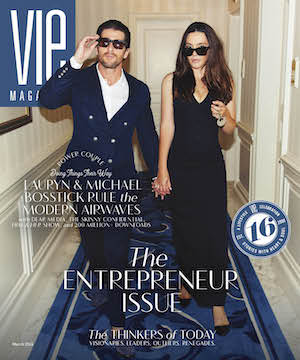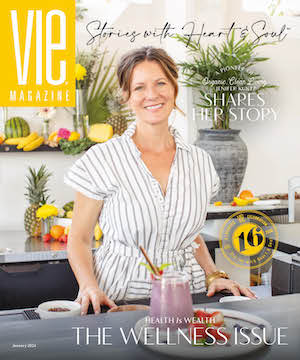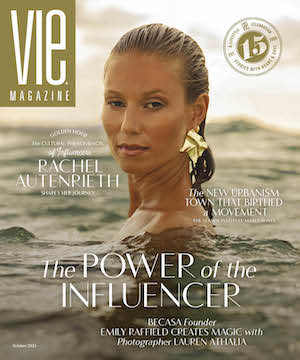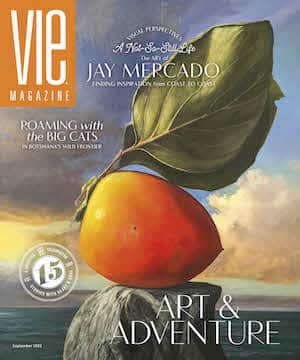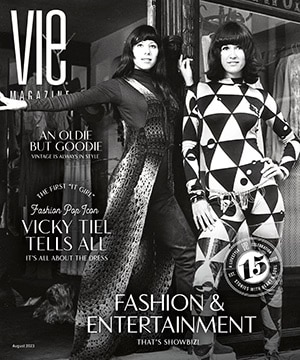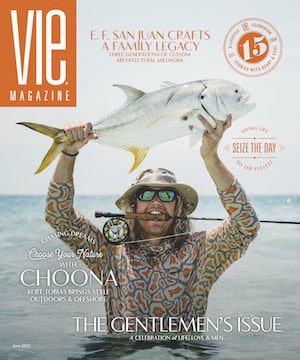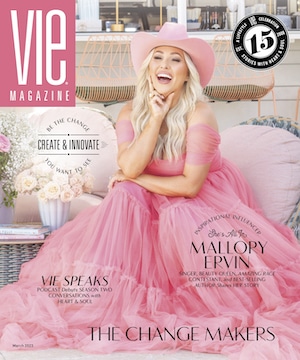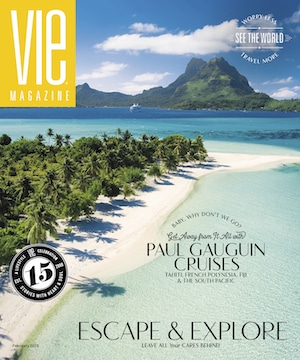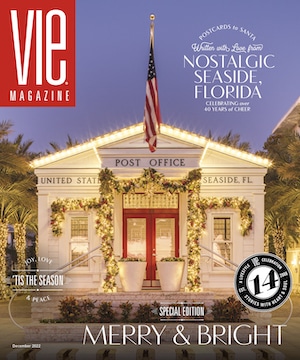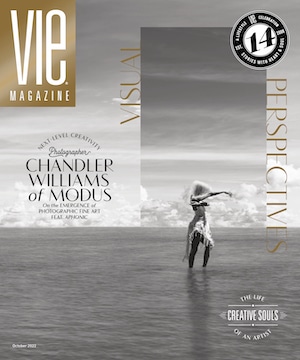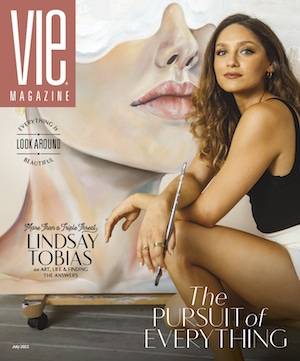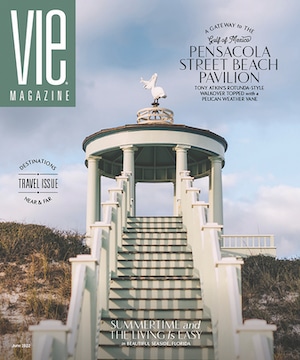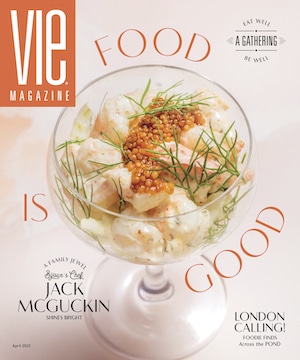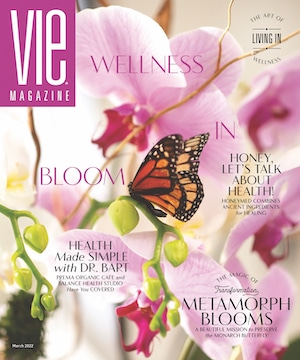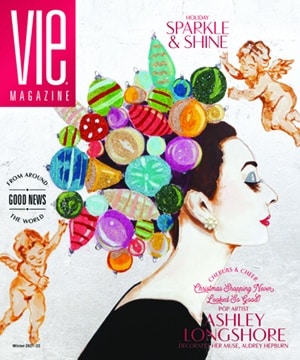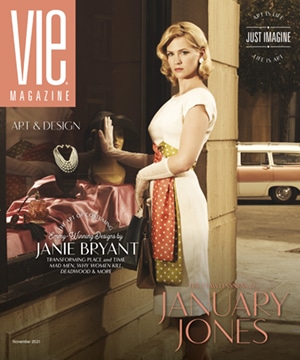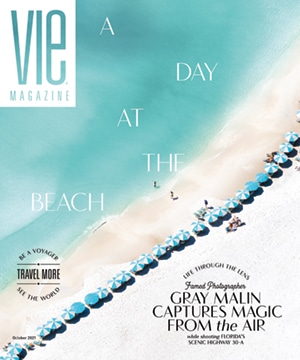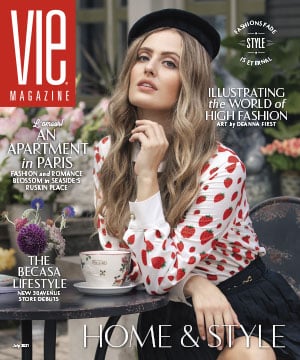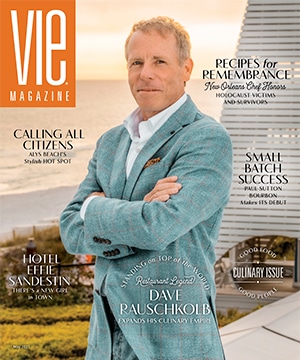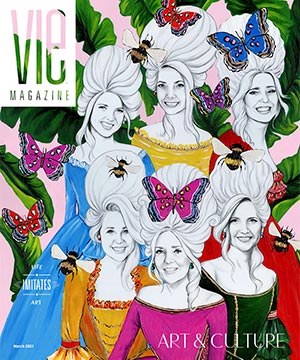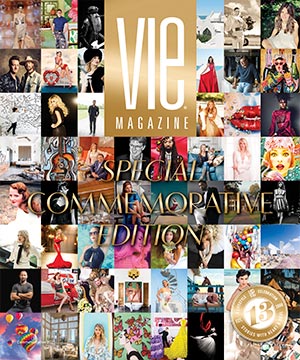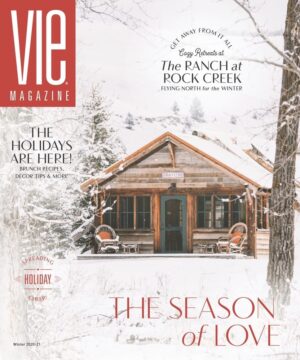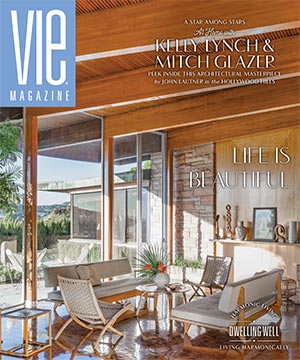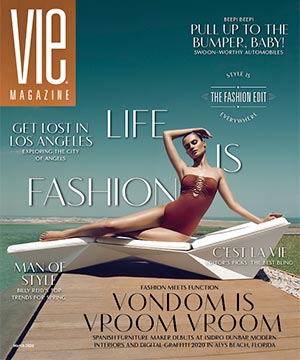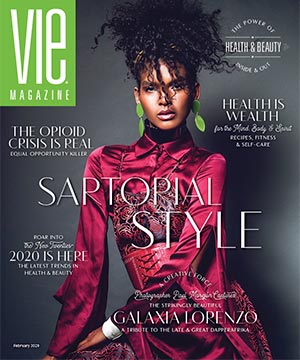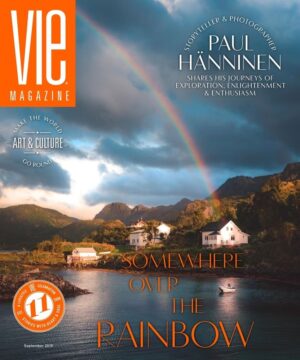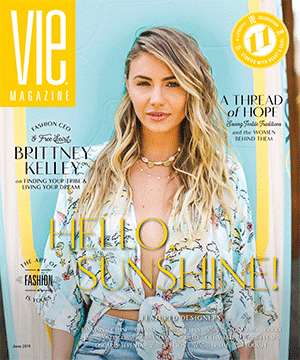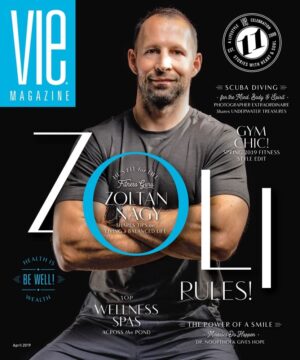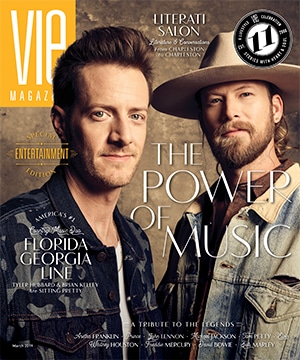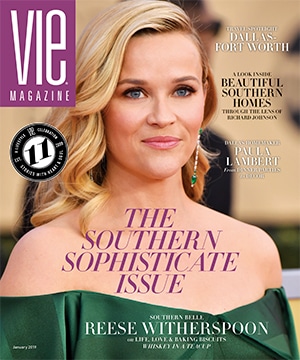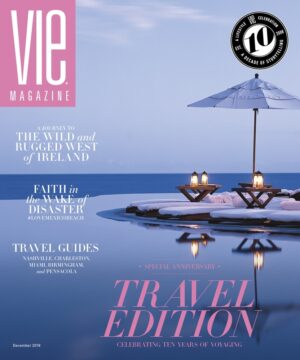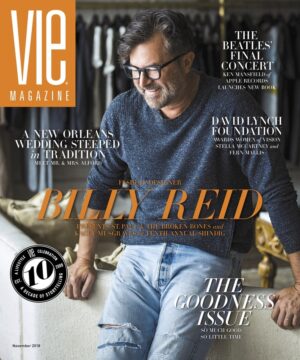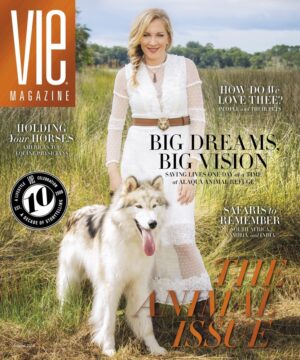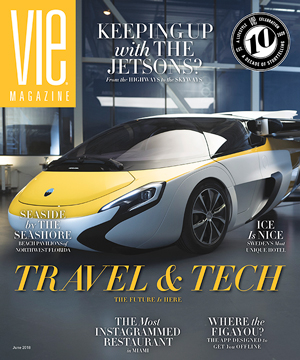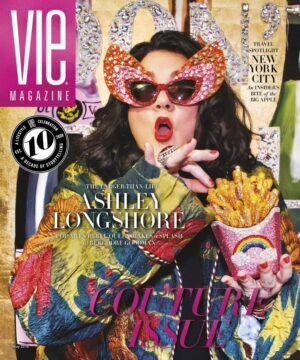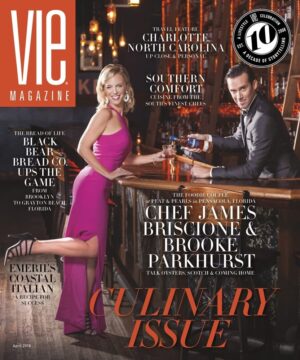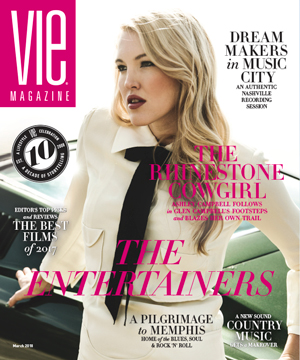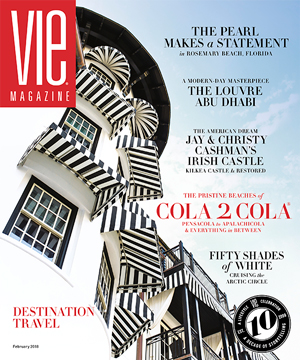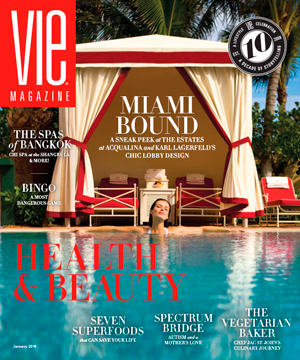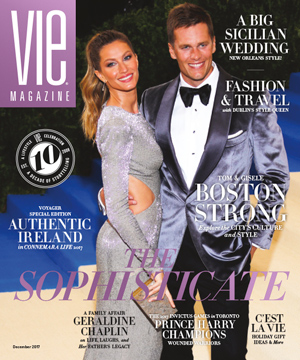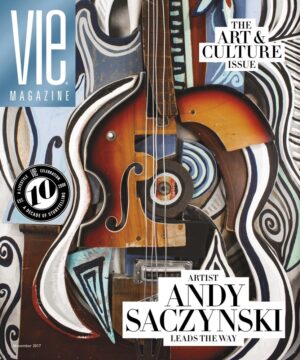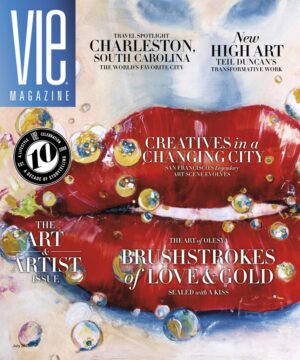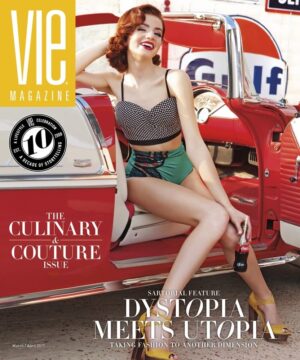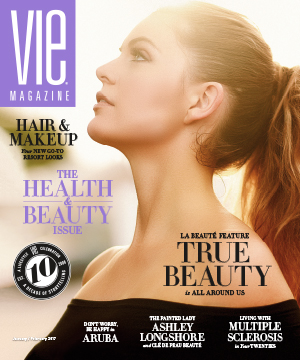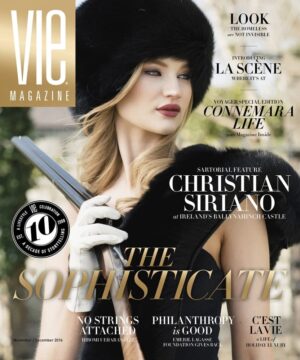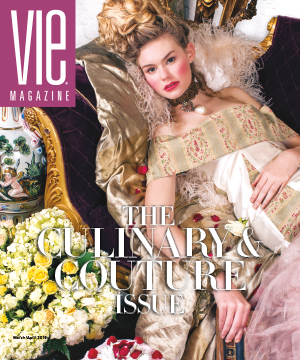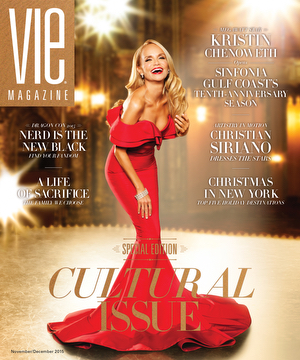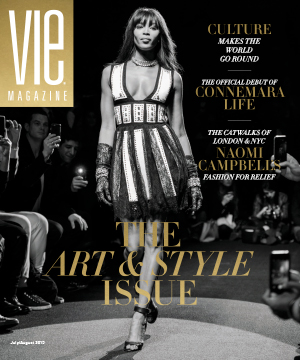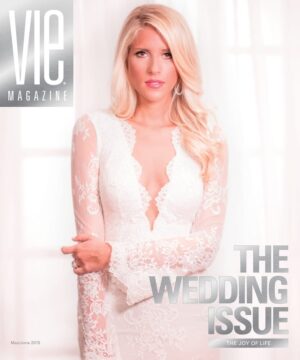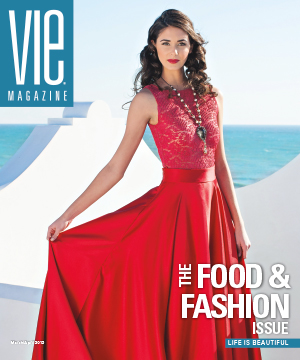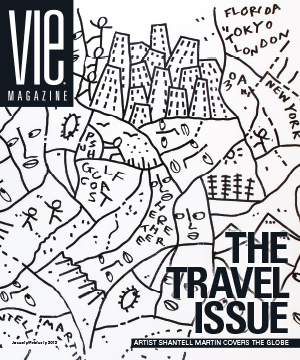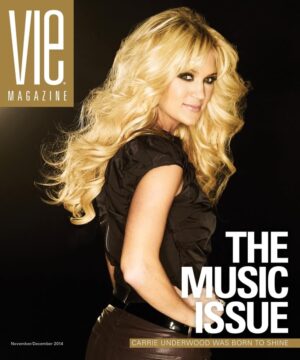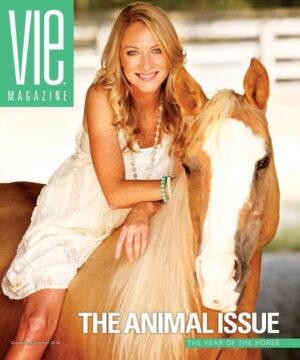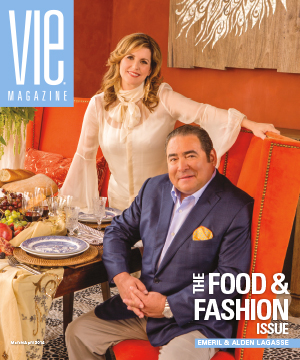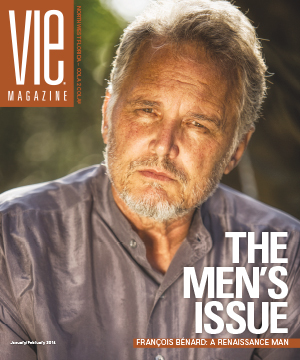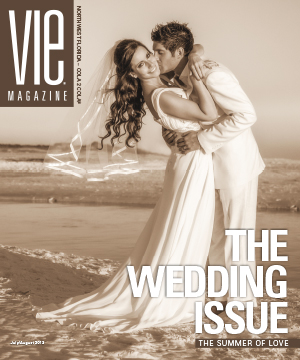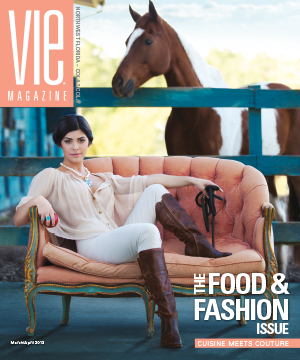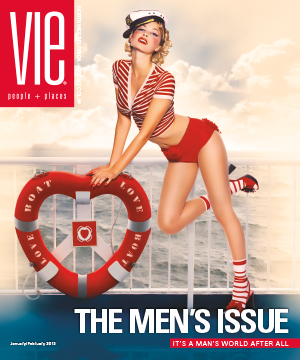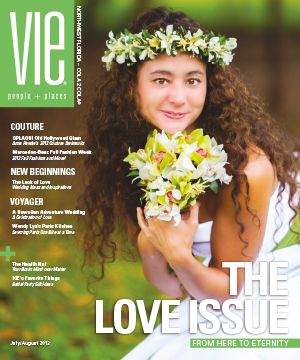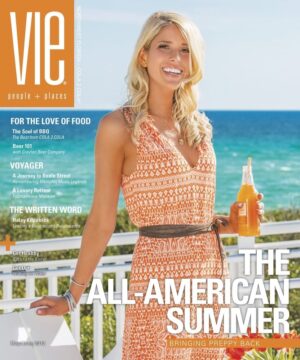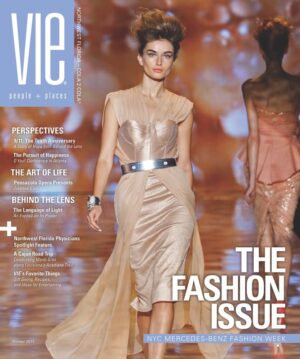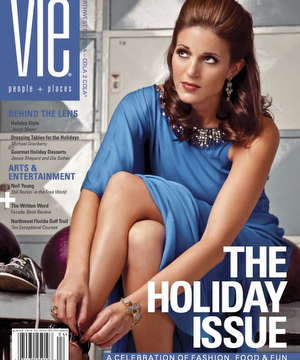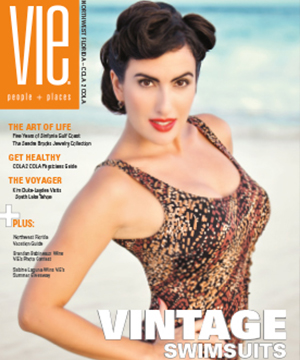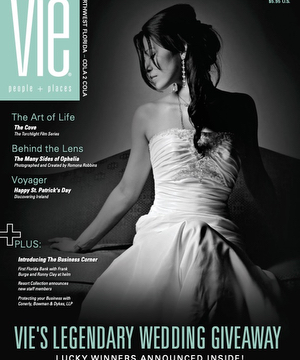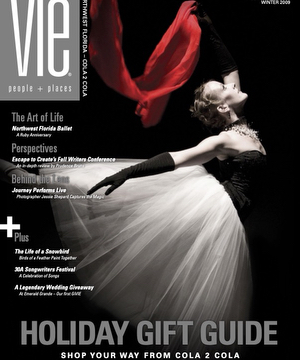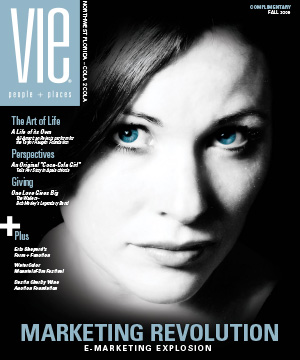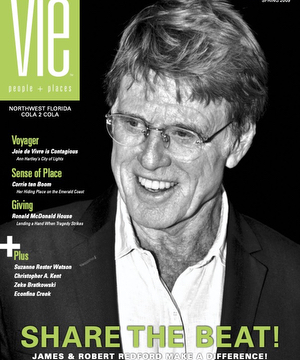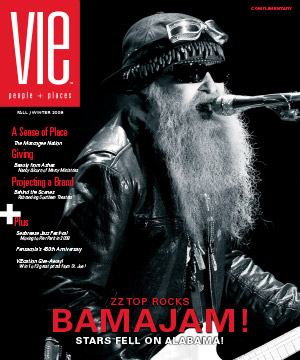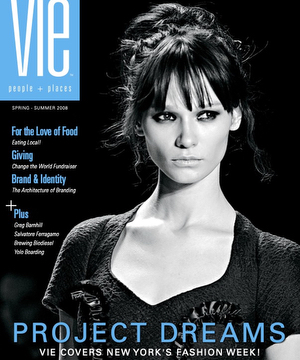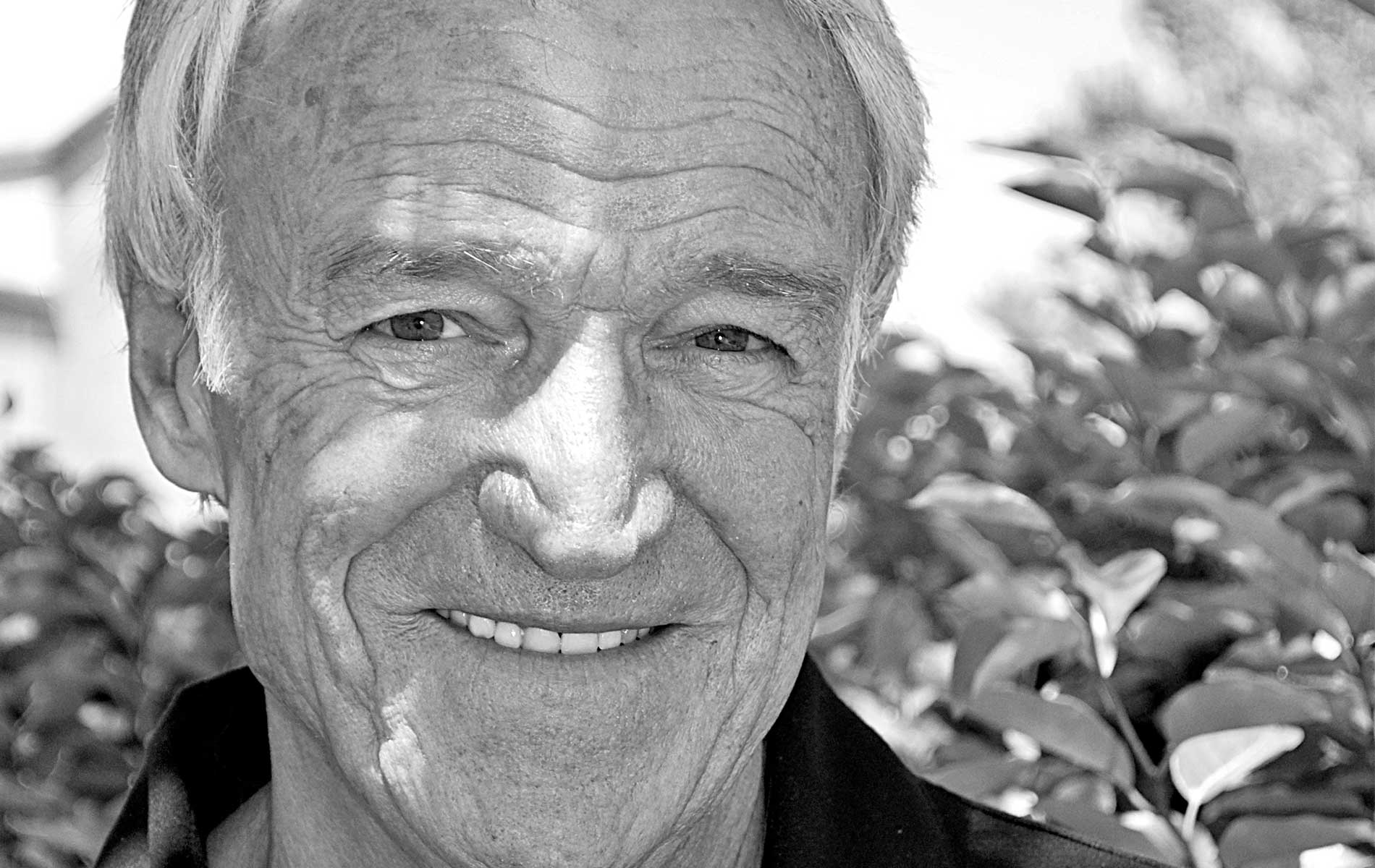
vie-magazine-winter-2010-clark-peters-health-nut
THE AMERICAN HEALTHY DIET—AN OXYMORON?
By Clark Peters
[intro_paragraph]Most of America assumes, as I once did, that in a country with the highest standard of living anywhere, we would also naturally enjoy the best food anywhere. In fact, the modern American diet may be the worst diet in the history of mankind in its effects on health and longevity. The problems are many but primarily revolve around processed concoctions replete with the wrong fats and simple carbohydrates. What follows are suggestions for a much healthier approach. For those eating the “typical” American cuisine, this will be a huge step towards healthier eating.[/intro_paragraph]
Heart disease is the primary killer in the U.S. If you are battling an existing or suspected cardiovascular condition, even this regimen may not be enough change. Your doctor should be consulted about diet in those instances. For most, however, movement toward this regimen will be a large step toward better health through diet.
Prior articles have focused on what not to put in your mouth; the short list would strongly suggest elimination or severe reduction of the following:
- Sugars—especially high fructose corn syrup, but all sugars are empty calories.
- Saturated fats and especially trans fats—some fats are essential, but these two categories have no redeeming qualities.
- Processed grains—the list here is very long. Any processed grain (flour) should be viewed as predigested sugars. These are found in cereals, breads, pastas, etc.
- Alcohol—the purest form of concentrated sugar. Cut way back. Zero is best.
- Fried anything—frying infuses fat into food. Oils heated to frying temperatures are toxic. Simple rule: eat nothing fried!
Okay, so that’s what to avoid or, at least, significantly reduce. But how do we eat healthier? As suggested in my previous article, “You Are What You Eat” (VIE Fall 2010), two fundamental rules apply:
- Consume all three macronutrients (protein, carbs, and good fats) with every meal.
- Eat these so as to maintain a stable blood sugar (glucose) level.
The alternative is a diet which promotes obesity, inflammation and disease! It’s that simple to describe, but takes some knowledge and discipline to implement.
Again, also covered in my previous article, each of the macronutrients provides items essential to good health:
- Proteins—provide amino acids, our basic building blocks.
- Carbohydrates (direct from nature) — provide nutrients, vitamins, minerals, phytonutrients, fiber, etc.
- Good fats—provide essential fatty acids and promote cell wall health and strength.
As well, we have made the point that each of the macronutrients has a distinctive glycemic (blood sugar) conversion characteristic:
- Proteins—moderate glycemic indices (GIs). Can be eaten alone without spiking sugar.
- Carbs—highest GIs, and the more processed, the higher the GI score.
- Fats—the slowest to convert (also can be eaten alone).
So, if our goal is to maintain an optimal blood sugar level, the macronutrients should be eaten in combinations which accomplish this. One of the best ways is to combine about 40 percent protein, 40 percent carbs (from nature) with 20 percent good fats. Meals and snacks combined this way will sustain optimal glucose levels, thus avoiding sugar spikes and crashes and, consequently, preventing hormone imbalances, obesity, splurge eating, mood swings, and poor health.
I don’t like counting calories or measuring ounces and grams, so a simple rule of thumb may help for portion control and proper ratio. For a full meal, aim for a fist-sized portion (self-regulating since different-sized men and women have different fist sizes) of protein, a fist-sized portion of complex carbs and a handful of good fat. For example, you might choose a “fist” of broiled skinless chicken breast and a “fist” of good carbs (say, a small salad bowl of raw vegetables with a salad dressing of extra virgin olive oil—a good fat—and vinegar, or steamed fresh vegetables sprinkled with raw almond slivers—another good fat).
Proteins
Lean protein can be the foundation of most meals/snacks. There are two compelling reasons for this:
- Protein promotes stable glucose levels for hours, thus avoiding the urge to snack incessantly.
- Protein also promotes the release of glucagon, a hormone with the opposite effect of insulin; i.e., glucagon opens your fat cells so they can release glucose! This, of course, reduces fat while the protein’s amino acids are enhancing your lean body mass—very desirable.
So, let’s discuss good protein. Studies suggest eating about one gram of lean (less than 20 percent fat) protein per pound of body weight/day. So, a 200-pound man would need about 35 grams per meal, assuming six meals/snacks over the waking hours. A woman of 120 pounds would seek 20 grams per meal/snack.
Good Proteins
- Eggs—excellent protein source but each egg contains only 6 grams, so eat more than a couple to achieve goals.
- Seafood—all types (except farm-raised), including shellfish, are terrific, and many supply an added bonus in the form of omega-3 fatty acids.
- Poultry—skinless chicken or turkey provides a good protein base to any meal. Many birds (ducks, geese, quail) are too fatty to meet the lean definition. Free range is desirable.
- Dairy—low fat or no-fat dairy products can fill some of your protein needs. Try to get organic milk, cottage cheese, yogurt, etc.
- Wild game—any you can find and enjoy is a wonderful source. Wild animals are very lean protein, but some people dislike the “gamy” taste. Examples include elk, venison, bison, etc.
- Beef—only if grass-fed and organic. Like farm-raised fish, most livestock is force-fed corn and grain, along with growth hormones. The result is meat with over 70 percent saturated fat content and unusual composition. Similarly, all pork is too fatty to be considered a good protein source.
- Whey protein powder—many people are not aware that whey provides the best protein available. A byproduct of the cheese-making process, whey powder is in about the fifth generation of refinement. The successive iterations have produced a near-pure protein. There are a number of whey products out there—the best is undenatured whey protein isolate or concentrate. The product is packaged in bins of vanilla or chocolate, and a full scoop (enclosed in the package) provides 25 or so grams of pure protein. Health food stores used to be the only source, but now most supermarkets stock this item. It’s also available online. Be sure the sugar content is 1gm or less/serving.
The whey powder can be mixed with water or skim milk for a quick snack. Two recipes for a full meal follow:
- Protein shake—put a handful of raw nuts in the bottom of your blender. Add a fist of fresh/frozen fruit. Then add two scoops of whey powder. Stick to vanilla or chocolate—the other flavors add too much sugar and artificial flavoring (whatever that is!). Fill the blender to 65– 75 percent capacity with water or organic skim milk. Liquefy the contents and enjoy a glass (women) or two (men) for a full meal.
- Breakfast—start with 4–5 tablespoons of either organic no-fat yogurt or organic low-fat cottage cheese. Add a handful of raw nuts, a fist of fresh fruit, a scoop of whey powder and a little skim milk. Stir to pudding consistency and enjoy. A healthy way to start your day!
Carbohydrates
Any fresh fruit, preferably organic and direct from nature (i.e., unprocessed in any way), is a fine addition to your meals. Fresh vegetables, again preferably organic and unprocessed, are also excellent. Fresh frozen is also fine. Some guidelines: the more colorful, the better the choice; for example, a sweet potato is a healthier choice than a white potato. Cooking starts to leach out nutrients, fiber, etc., so raw is best; lightly steamed, next best; and so on. Think al dente.
Fats
Fats may be the most misunderstood of the macronutrients. For the past three decades or so, food manufacturers and “diet experts” have been touting “low fat” this and “no fat” that. The implication is that eating fat makes you fat. As the stable blood sugar model and the GI suggests, appropriate ingestion of good fats can, instead, provide a governor effect on blood sugar absorption which avoids fat accumulation. Two caveats:
- A gram of fat contains twice the calories (9) compared to either protein or carbohydrates (about 4.5). Calories count! (See “Obesity” article, VIE Summer 2010.) So gorging on fat will indeed make you fat—the body has no other choice but to store excess calories in fat cells. Cheese, which is almost all saturated fat, is the usual culprit in most people’s diets. Used judiciously, however, a little good fat can be helpful in maintaining a healthy lean weight.
- Some fats are essential (those containing omega-3 fatty acids), so the only way to get these beneficial acids is to ingest them. However, fats come in three categories: the “good” (containing omega-3s), the ‘bad” (saturated), and the “ugly” (trans fats). Good fats are a must, bad fats should be minimized, and the ugly avoided. The “ugly” or trans fats (usually identifiable by the labels hydrogenated or partially hydrogenated) are man-made creations which are so toxic and unnatural that the body does not know what to do with them. Your body will expend enormous nutrient resources (in the liver and through the immune system) to rid itself of these foreign substances. Simple rule: avoid all trans fats.
Good Fats
- Raw nuts/seeds (and their oils/butters)—Any raw nut or seed is a good source of omega-3s. A handful of raw nuts (say, almonds), in fact, can be a healthy snack to get you to the next meal and is somewhat self-limiting. Usually, a handful will fill you up. Caveats: once they are cooked or coated, nuts and seeds are no longer healthy. So roasted, salted, or sugar-coated nuts are no-no’s. Remember, too, that peanuts, despite their name, are legumes, not nuts. Peanut butter is basically junk food.
- Avocados—an excellent addition to salad or a meal. They are very rich, however, so use sparingly.
- Oils—mono- or polyunsaturated oils are good fats. Uncooked are best (salad dressings, etc). Cooking with oils is okay, but only up to the point when they start to smoke. At temperatures hot enough to make them smoke, they turn toxic. Use for light sautéing.
Conclusion
Healthier eating is possible in America. It takes some knowledge (hopefully, you now have a few “rules of the road” to use), common sense and diligence, but it can be done and done with delicious food!
Good luck and bon appétit!
— V —
Clark Peters has spent much of his time since his retirement in 1997 researching health and longevity. His purpose in writing these columns is to share his findings with readers in plain English and assist them in making accurate and informed lifestyle choices. The columns are based on the premise that we all want to live a long, vigorous life and are striving to make healthy choices.
While Mr. Peters believes these recommendations will result in better health and longevity for almost everyone, the reader is advised to consult with his or her physician before making any major lifestyle changes. You may e-mail Mr. Peters at: hlthnut@earthlink.net.
Share This Story!
KEEP UP WITH THE LATEST STORIES FROM VIE
